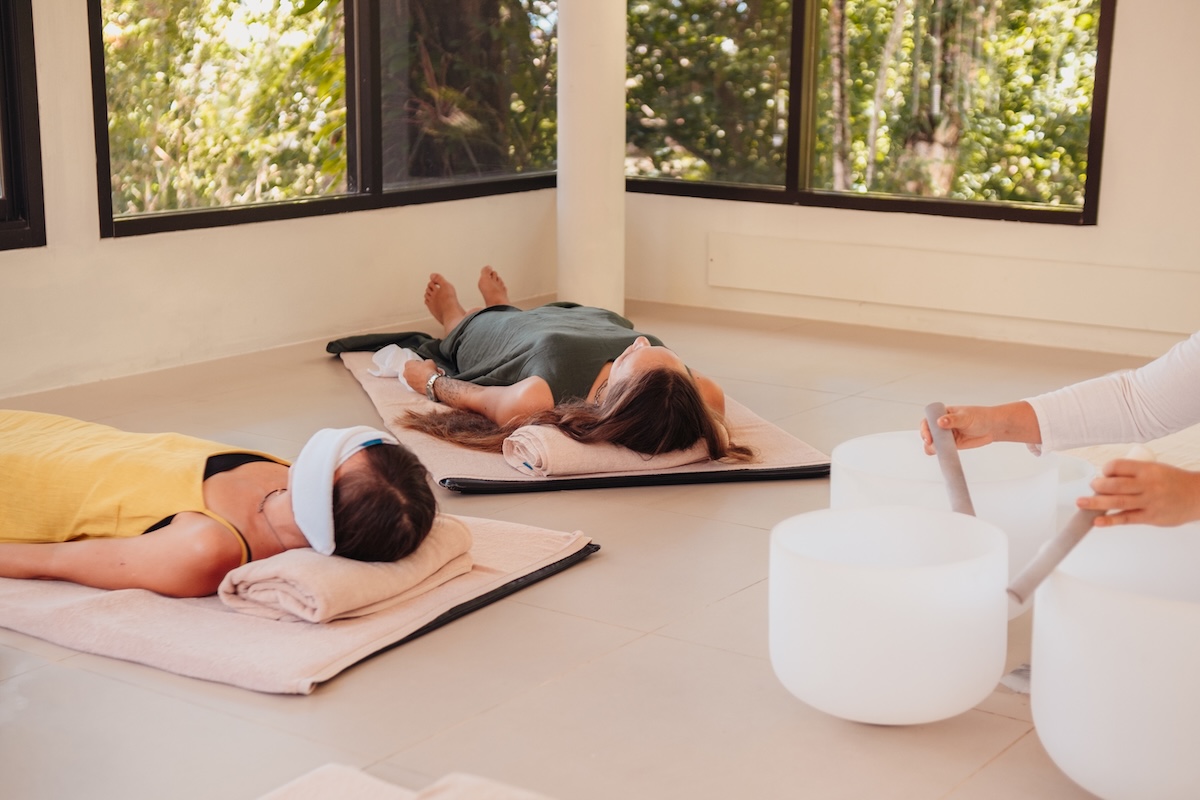What is sound healing and why is it trending in spa treatments?
Sound healing is an ancient practice rooted in the belief that vibrational frequencies can influence our physical and emotional wellbeing.
Today, modern science increasingly supports these principles, with quantum physicists affirming that everything in the universe is in a constant state of vibration.
In spa settings, sound healing offers a powerful, non-invasive way to help clients access deep states of relaxation, emotional release and holistic wellbeing.
Wellness practitioner Michelle Saudan explains, "One of the basic tenets of using sound as a healing modality is this – we are like an extraordinary orchestra playing the symphony of the self.
“Every organ, every bone, every tissue, every part of our body is playing together, producing different frequencies and sounds."
How sound healing works: psychoacoustics and vibroacoustics
Sound therapy affects the body through two mechanisms:
- Psychoacoustics: Sound travels through the ears and influences the nervous system, respiration, heart rate and brain waves.
- Vibroacoustics: Vibrations move through the body, resonating at a cellular level and impacting our overall DNA structure.
Saudan says, "Using the metaphor of the body being like an orchestra, what happens if the second violin player loses their sheet music? They begin to play out of tune... This would be similar to a part of our body vibrating out of its natural harmony."
She adds, "We say it’s vibrating out of ease. We call it dis-ease."
Sound therapy benefits for spa clients
Spa clients are increasingly turning to sound healing to:
- Achieve deep relaxation
- Clear energetic blockages
- Improve sleep
- Reduce blood pressure and muscle tension
- Support emotional and spiritual wellbeing
- Alleviate symptoms of anxiety and trauma
Phillipa Spivey, a sound healing practitioner and experienced beauty therapist, says, "Sound baths can release any underlying trauma and emotion... A feeling of calm is the most common outcome, the combination of breathwork, meditation and sound leaves the body and mind completely relaxed and relieved of tension."

What instruments are used in sound healing?
Sound therapy sessions integrate a range of tools to produce healing frequencies:
- Crystal quartz singing bowls: Often tuned to 432Hz, known to harmonise with nature and reduce stress
- Tingsha bells and Koshi chimes: Used to open or close treatments, calm the mind
- Monochord: Played directly on the body in vibroacoustic sessions
- Rainmakers, gongs and flutes: Stimulate different parts of the energy body
- Tuning forks: Weighted forks placed on meridian points for pain relief and energy alignment
Spivey shares, "The effect sound has on the brain is quite remarkable. Sound can help calm the fight or flight part of our brain called the amygdala... allowing better decision-making and letting go of fear."
How to add sound healing to your spa menu
There are many ways spas can start integrating sound therapy:
- Add tuning forks or chimes to enhance facials or massages
- Use Koshi chimes or Tingsha bells to begin or end treatments
- Offer standalone one-to-one or group sound baths
- Pair guided meditation with sound healing for a sensory-rich spa journey
Spivey says, "Sound compliments the spa environment beautifully. We are reducing physical pain but also working on balancing the nervous system and releasing blockages to allow better flow of energy."
Advice for spa therapists introducing sound healing
For therapists new to vibrational therapy:
- Begin by using simple tools like tuning forks or bells
- Incorporate Solfeggio frequencies into spa playlists
- Experiment with closing treatments using sound instruments
- Ensure practitioners are certified and insured
"If your space is comfortable, quiet and warm, it will be the perfect place to hold space for others on their healing journey," says Spivey.

Training and accreditation for sound therapy
Spivey advises, "Make sure the course you decide to take is insurable and accredited by relevant professional bodies such as the Federation of Holistic Therapists, International Practitioners of Holistic Medicine or Think Tree."
She recommends:
- Investing in a few crystal or Tibetan bowls early
- Practising on case study clients
- Reading sound healing literature and attending classes to deepen understanding
Why sound healing is on the rise in wellness
As mental health challenges increase and stress becomes more common, demand for alternative therapies is growing. "Sound baths have become the new cool but hugely effective treatment to calm the mind and body," says Spivey.
She notes a broader shift: "Therapies such as massage and sound healing are now part of many corporate wellness schemes to support employees' mental and physical health."
Sound therapy is a natural fit for spa menus rooted in sensory experience, healing touch and mind-body connection.
Whether through bowls, tuning forks or full immersive sessions, sound healing is a scalable, evidence-supported modality that resonates with today’s wellness-focused clients.
About the experts
Michelle Saudan is an wellness specialist and retreat curator offering massage, life coaching, NLP, meditation and sound therapy.
Phillipa Spivey is a certified sound healing practitioner and beauty therapist with over 20 years' experience. She offers private and group sound healing sessions using crystal bowls, meditation and frequency work.
You might also like:
- Why understanding the mind-body connection is important
- What is ‘aura’ and how can you incorporate the trend into your business?
- How gut health affects the skin: what beauty professionals need to know




